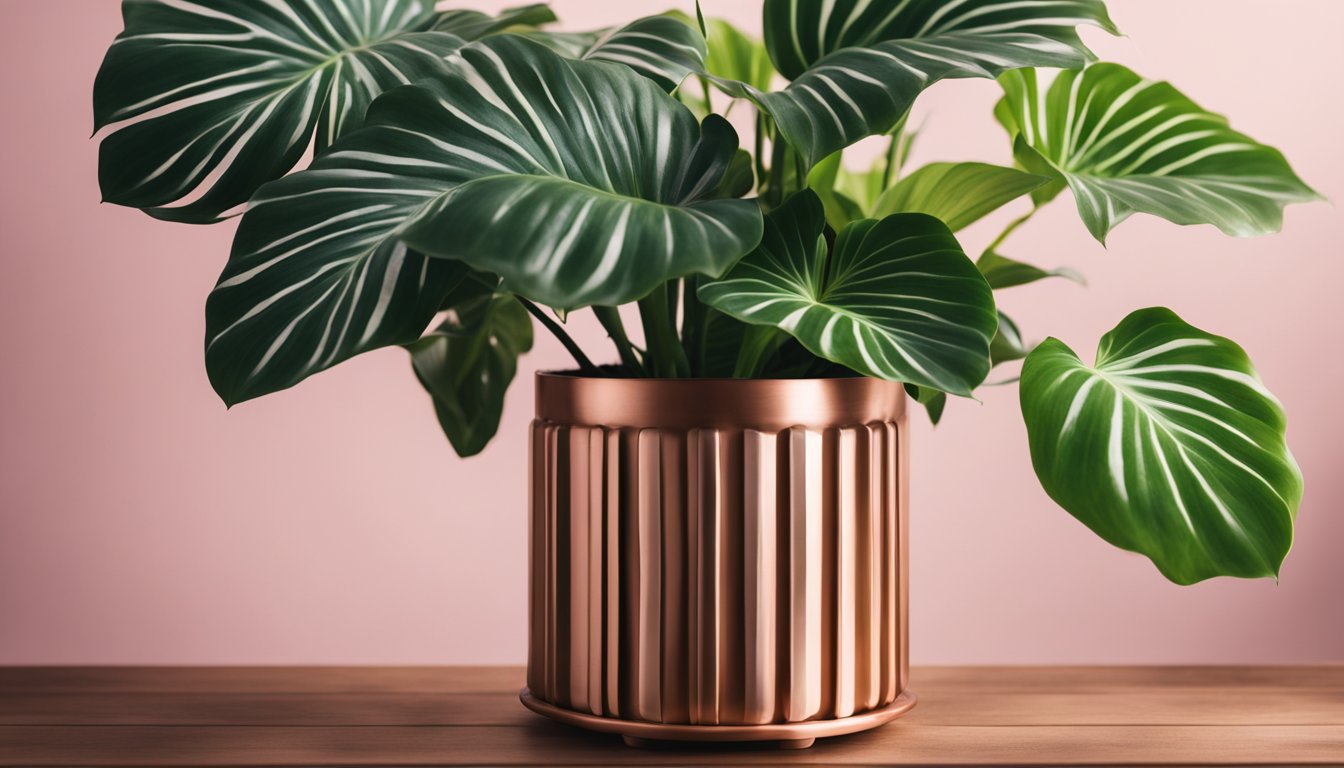If you’re looking to elevate your indoor plant game, the Calathea Maranta, often called the prayer plant, deserves a spot on your shelf. With its stunning, patterned leaves that seem to dance in the light, this plant isn’t just a pretty face; it’s also a fantastic air purifier. Imagine bringing a piece of the rainforest into your home, creating a serene oasis that breathes life into your space.
Caring for a Calathea Maranta might seem daunting, but I promise it’s easier than you think. With the right tips and tricks, you’ll have a thriving plant that not only enhances your decor but also boosts your well-being. Let’s dive into the captivating world of the Calathea Maranta and discover how to nurture this botanical beauty to its fullest potential.
Overview of Calathea Maranta
Calathea Maranta, commonly called the prayer plant, showcases striking patterned leaves. These leaves exhibit vibrant colors and distinct designs that draw the eye. The plant thrives in indoor settings, adding a splash of greenery that brightens up any space.
I appreciate how the Calathea Maranta purifies the air. It removes toxins, improving indoor air quality. Having one at home feels like inviting a piece of the rainforest inside.
Caring for this plant isn’t a challenging job. It prefers indirect light, making it perfect for rooms without direct sunshine. Keeping the soil moist but not soggy creates an ideal environment for growth.
I enjoy watching the leaves fold up at night, resembling hands in prayer. This unique trait gives the plant its nickname and adds character to my collection. Each morning brings my prayer plant back to life, unfurling its beautiful foliage as if it’s greeting the day.
Summarizing, this fascinating houseplant not only adds aesthetic value but also contributes to a healthier home. Its charm lies in its beauty and the mindful care it requires.
Botanical Characteristics

Calathea Maranta exhibits fascinating features that capture attention. Its beauty lies not just in its appearance but also in its background and leaf anatomy.
Origin and Habitat
Calathea Maranta originates from the tropical rainforests of Brazil. This environment gives the plant its love for humidity and indirect sunlight. In nature, it thrives under the canopy of larger trees. Here, it enjoys filtered light and abundant moisture. The natural habitat influences indoor care requirements. I often replicate these conditions by placing the plant in warm, humid spots.
Leaf Structure and Patterns
Leaves of Calathea Maranta boast a striking appearance. They display a variety of colors and patterns, including deep greens, light greens, and purple hues on the underside. Each leaf sports unique markings that can resemble brush strokes or intricate designs. The leaf shapes are oval, often stretching up to six inches long. They move throughout the day, opening wide in sunlight and folding at night. This behavior earns them the nickname “prayer plant.” Watching these leaves dance brings joy to any space.
Care Guidelines
Caring for your Calathea Maranta is straightforward and rewarding. Follow these guidelines for optimal plant health.
Light Requirements
Calathea Maranta prefers bright, indirect light. Direct sunlight can scorch the leaves. If you notice the colors fading, it may indicate too much sun. Placing it near a window with filtered light works well. A spot a few feet away from the window typically fits.
Watering Needs
Watering is crucial for this plant’s health. I check the soil moisture regularly. If the top inch feels dry, it’s time for a drink. Use room temperature water to avoid shocking the roots. Ensure that the pot has drainage holes to let excess water escape. Nobody likes soggy feet, not even plants!
Humidity and Temperature
Calathea Maranta thrives in high humidity. I often mist my plant or place it on a pebble tray filled with water. Keeping humidity levels around 50% or higher promotes vibrant growth. The ideal temperature range is between 65°F and 80°F. Avoid placing it near drafts or heat sources, as sudden temperature changes can be stressful for this beauty.
Common Issues and Solutions

Calathea Maranta, despite its beauty, can sometimes face a few challenges. Let’s explore common issues and their solutions to keep your plant thriving.
Pests and Diseases
Pests like spider mites and aphids love to make a home on Calathea Maranta. Check for tiny webs or sticky residue. If you spot these pests, act quickly. I recommend wiping leaves with a damp cloth or spraying with insecticidal soap. Consistent monitoring helps prevent larger infestations.
Fungal issues, such as leaf spots, can occur too. These often arise from overwatering or poor air circulation. If you notice dark spots, reduce watering frequency and improve airflow around the plant. In severe cases, remove and discard affected leaves to stop the spread.
Leaf Care Tips
Leaf care plays a crucial role in the plant’s health. My first tip? Keep leaves clean. Dust can block sunlight and reduce photosynthesis. I simply mist the leaves or wipe them gently with a damp cloth.
Humidity is vital for Calathea. If you live in a dry environment, consider placing a humidifier nearby. Alternatively, a pebble tray filled with water works wonders. Your plant will sip moisture and thank you for it!
Wilting leaves signal stress. If the leaves droop or curl, it might be thirsty. I check the soil. If the top inch is dry, it’s time to water. Use room temperature water and ensure excess moisture drains out.
Lastly, watch for color changes. Light green or yellowing leaves often indicate too much direct sunlight. Move your plant to a shadier spot to restore its vibrant colors.
Propagation Methods
Propagation of Calathea Maranta is straightforward and rewarding. I often use two main techniques: division and stem cuttings. Each method offers a unique way to expand my plant collection.
Division works well for mature plants. I start by gently removing the plant from its pot. Next, I separate the root ball into smaller sections. Each section should have at least one healthy stem and roots. After that, I plant these divisions in their own pots with fresh potting mix. Water them lightly and place them in a warm, humid spot.
Stem cuttings provide another easy method. I take healthy stems with a few leaves attached. Cutting just below a node helps promote new growth. I place the cuttings in water or directly in moist soil. If using water, I change it every few days to keep it fresh. Roots usually form within a few weeks. Transplant them into pots once they reach about two inches long.
Both methods can lead to new plants that are just as vibrant as the original. I prefer division for its speed, while I enjoy watching stem cuttings grow in water. Each approach brings a little joy, making propagation an excellent hobby.
Maintaining humidity throughout the process is essential. I often mist my cuttings or use a plastic bag to create a mini-greenhouse effect. These simple tricks provide the moisture needed for successful growth. Remember, patience is key. New plants take time to adjust but offer beautiful rewards in return.
Calathea Maranta can thrive well in these methods, adding more greenery to my indoor garden.
Before You Go – Calathea Maranta
Bringing a Calathea Maranta into my home has truly transformed my space. Its vibrant leaves and unique movements add a touch of life that’s hard to replicate. I love how it not only beautifies my surroundings but also purifies the air, creating a healthier environment for me and my family.
Caring for this plant is straightforward and rewarding. With a little attention to humidity and light conditions, I’ve seen my prayer plant thrive. Plus, the joy of watching its leaves unfold each morning never gets old. Whether you’re a seasoned plant parent or just starting out, the Calathea Maranta is a wonderful choice that’ll surely bring both beauty and serenity to your indoor garden. Don’t forget to add The Herb Prof to your favorites so you don’t miss out on future articles.
References – Calathea Maranta
Little Herb Encyclopedia, by Jack Ritchason; N.D., Woodland Publishing Incorporated, 1995
The Ultimate Healing System, Course Manual, Copyright 1985, Don Lepore
Planetary Herbology, Michael Tierra, C.A., N.D., Lotus Press, 1988
Handbook of Medicinal Herbs, by James A. Duke, Pub. CRP Second Edition 2007
The Complete Medicinal Herbal, by Penelope Ody, Published by Dorling Kindersley
Check the Following Articles
How to Grow Garlic in a Pot: A Step-by-Step Guide
Milk Thistle Supplements for Liver Detox: Top Options
Effective Tips on How to Kill Aphids In Your Garden
Antibiotic Herbs: Boost Your Health Naturally
Frequently Asked Questions – Calathea Maranta
What is a Calathea Maranta?
The Calathea Maranta, also known as the prayer plant, is a popular houseplant native to the tropical rainforests of Brazil. It features stunning patterned leaves that fold up at night, resembling hands in prayer. This plant not only enhances home decor but also improves indoor air quality by purifying the air.
How do you care for a Calathea Maranta?
To care for a Calathea Maranta, place it in bright, indirect light and keep the soil consistently moist but not soggy. Ensure high humidity levels, ideally around 50%, by misting it regularly or using a pebble tray. The temperature should remain between 65°F and 80°F for optimal growth.
Why do the leaves fold at night?
The leaves of the Calathea Maranta fold up at night as part of a natural movement called nyctinasty. This unique characteristic allows the plant to conserve moisture and protect itself during cooler nighttime temperatures, resembling hands in prayer.
What are common problems with Calathea Maranta?
Common issues with Calathea Maranta include pests like spider mites and aphids, which can be managed by cleaning leaves or using insecticidal soap. Fungal problems, such as leaf spots, often arise from overwatering. Maintaining proper air circulation and adjusting watering habits can help resolve these issues.
How can I propagate my Calathea Maranta?
Propagation of Calathea Maranta can be done through division or stem cuttings. For division, separate the root ball into smaller sections, ensuring each has roots and stems. For stem cuttings, take healthy stems, cut below a node, and place them in water or moist soil, maintaining high humidity to encourage root growth.

